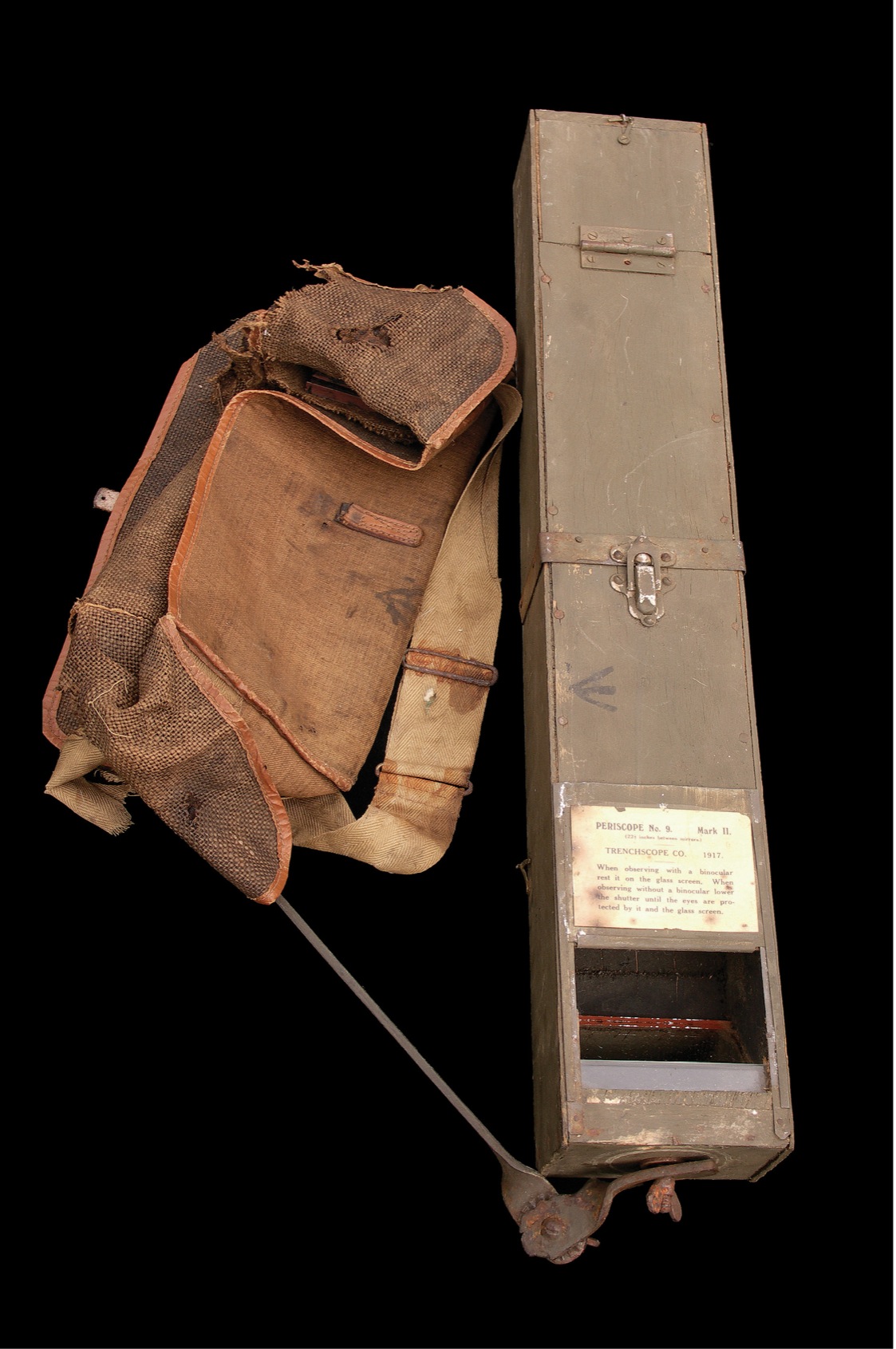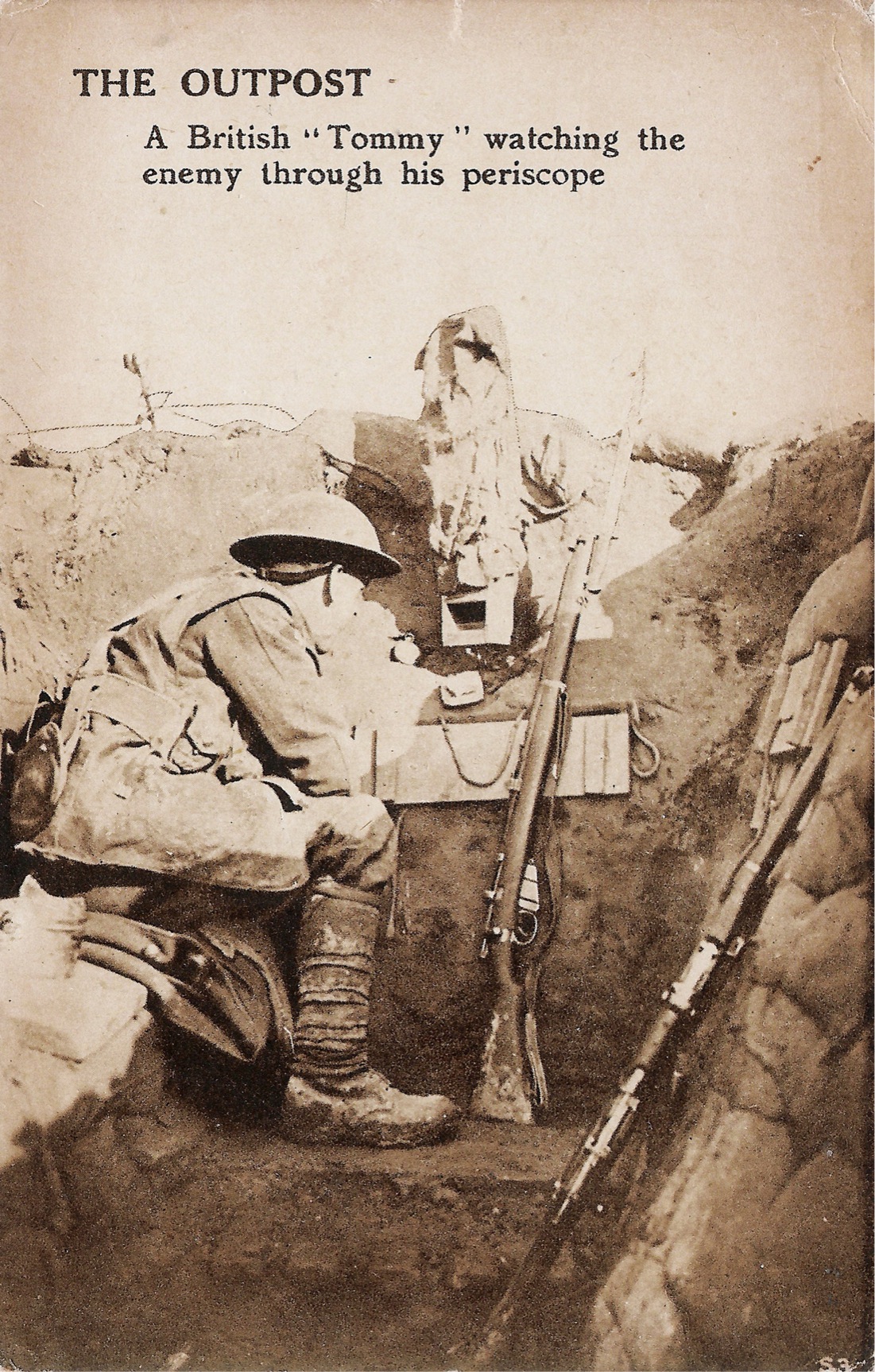38
Trench periscope

LOOKING OVER THE parapet in daylight was most unwise; snipers would have weapons fixed in position, targeted at dips in the parapet, at latrines and crossing points, and at loophole plates. There was continual loss of life on the Western Front through the actions of snipers in this way, combined with the altogether random attentions of the artillery shell. From early on, the need to be able to look over the parapet to observe activity in no-man’s-land led to the production of specially designed “trench periscopes.” Illustrated is the British No. 9 Box Periscope. Made by “Trenchscope Ltd.” in 1917, this is a typical issue item. This one saw service with the Australian Imperial Force (AIF) in France and is well preserved, found together with spare mirrors and its carrying bag. Cheaply made with boxwood, it is nevertheless complete.
In an issue of Transactions of the Optical Society for 1915, the basic parameters were laid down for trench periscopes, the object of which, it was stated, was “to give the soldier a view of his front whilst his head and person are sheltered.” Its author, W. A. Dixey, distilled these into four points: 1) portability; 2) degree of shelter provided; 3) field of view; and 4) camouflage to the enemy. Many patent versions were produced to try and achieve these aims; several of them were adopted officially, others were available for private purchase. Most provided a non-magnified field of view; magnification could be gained by the use of binoculars in association with the periscope.
For portability, a simple mirror attached to a stick or bayonet was the most effective. More commonly, day sentries would be stationed next to a No. 9 Box Periscope, which provided a clear field of view sufficient for most trench duties. Spare mirrors were essential—all too often they would be spotted by the enemy and “sniped”; shot out with a shower of glass splinters. Although portable, such periscopes were fixed at sentry posts throughout front-line trenches, effectively disguised from sniping by the use of sandbags and sacking.
Officers were drawn to more portable periscopes; the most commonly encountered periscope used by officers was the Beck’s No. 25, issued from 1917, which comprises a simple small diameter brass tube, with detachable handle and a focusing eyepiece. This effective piece of equipment was not only light, durable, difficult to spot at a distance, and long enough to provide the observer with sufficient protection, it was also a magnifying periscope, and popular with officers. A great many other types, many not as effective, are also known. The proliferation of “trench” periscopes during the war matched the increasing sophistication of the enemy in providing snipers. For the Germans, equipped with the highest quality lens-making factories, and observing from the high ground, the field of view was often clear; for the Allies, restricted to their simple mirrors, observing “over the top” was much more of a challenge.
